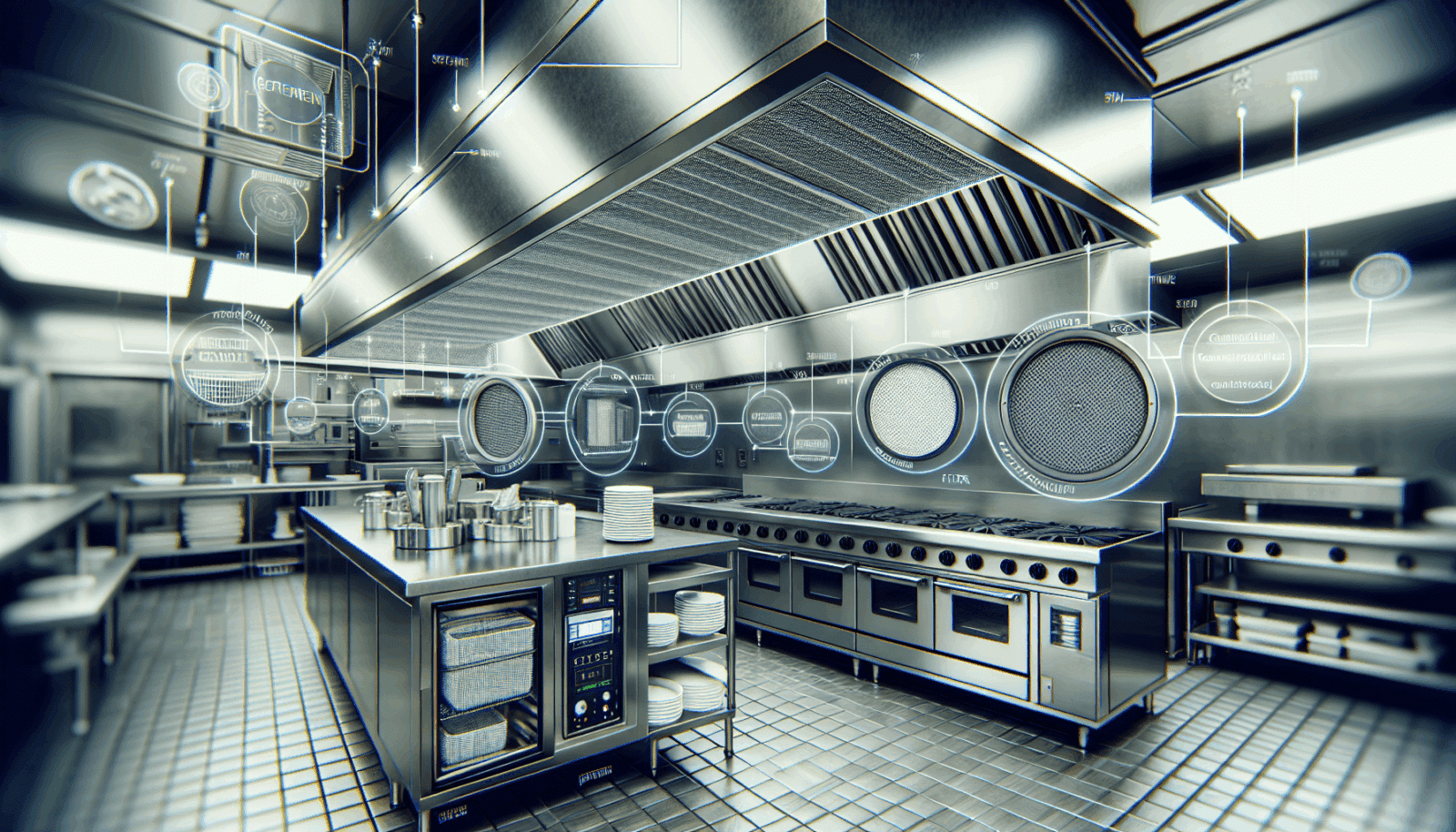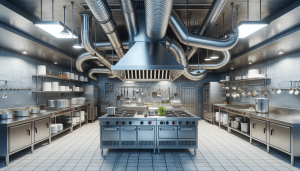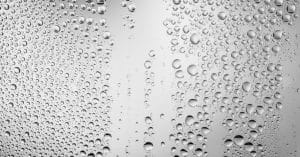Maintaining a restaurant kitchen hood can seem daunting, but it’s a crucial task that ensures everyone’s safety and keeps your kitchen running smoothly. Here at Utah Hood Cleaning, we understand the ins and outs of keeping your kitchen’s ventilation system in prime condition. In this post, we provide a detailed checklist to guide you through the entire process. Whether you’re a seasoned restaurant owner or new to the food service industry, this comprehensive step-by-step guide will help simplify your hood maintenance routine and keep everything in tip-top shape.
Understanding the Importance of Kitchen Hood Maintenance
Kitchen hood maintenance is vital for any restaurant because it directly impacts the safety and efficiency of your establishment. Without regular upkeep, Grease and grime can build up, leading to potential fire hazards and health code violations. Moreover, a well-aligned maintenance routine can extend the lifespan of your equipment, ensuring you don’t face unexpected breakdowns that could disrupt service. Our aim is to equip you with the knowledge and steps necessary to carry out effective maintenance, ensuring a clean and safe cooking environment.
Think of your kitchen hood as the lungs of your restaurant. Without proper airflow, smoke, odor, and harmful particulates can linger, impacting air quality and the overall dining experience. Therefore, consistent maintenance isn’t just a routine—it’s an indispensable necessity. With the correct know-how, you’ll not only improve your kitchen’s functionality but also comply with industry standards, thus keeping inspectors happy and increasing your peace of mind.
Inspecting the Filters
Regularly inspecting the filters is the first fundamental step in kitchen hood maintenance. These filters catch grease and particles, preventing them from building up inside the hood and ductwork. However, over time, they can become clogged, reducing their effectiveness and increasing the risk of a fire hazard.
To inspect the filters, start by turning off all power to the hood to ensure safety. Carefully remove the filters and check for any visible signs of grease buildup or damage. It’s important to clean or replace them regularly; how often will depend on the volume of cooking in your restaurant. Typically, a monthly check is a good rule of thumb, but higher traffic kitchens might need a more frequent schedule. By maintaining clean filters, you ensure optimal airflow and reduce the risk of potential hazards.
Cleaning the Filters
Once you’ve inspected the filters, the next step is getting them sparkling clean. A clean Filter guarantees better airflow and contributes significantly to efficient kitchen operation.
Start by soaking the filters in a solution of hot water and degreaser or dish detergent. Let them sit for 15-30 minutes, allowing the grease to break down. After soaking, scrub them with a non-abrasive brush to remove any remaining grease or debris. Rinse them thoroughly with hot water and let them air dry completely before reinstalling. Proper cleaning not only enhances performance but also eliminates any odors that might affect the dining ambiance.
Examining the Fan
The fan is another vital component of your kitchen hood system that requires attention. It’s responsible for drawing in the smoke and fumes for filtering, making its operation essential for maintaining a clean kitchen atmosphere.
A malfunctioning fan can severely affect the efficiency of your ventilation system, leading to a stuffy and uncomfortable kitchen. Regular examination can prevent such problems. Turn off all power sources before checking the fan, and inspect the blades and housing for grease and grime buildup. A clean fan works more efficiently, ensuring that smoke and odors are properly vented away from your kitchen.
Cleaning the Fan Blades
Simply inspecting your system’s fan blades isn’t enough—cleaning them is just as crucial. Accumulated grease on the fan blades can unbalance the fan, leading to noise, wear, and potential failures.
To clean the blades, carefully detach them from the fan’s motor. Use a degreaser spray and a soft cloth or sponge to remove any buildup. Remember, the removal of all grease deposits can help maintain balance and extend the fan life. After cleaning, make sure the blades are dry before you reinstall them. A well-maintained fan ensures consistent performance and minimizes unexpected downtimes.
Checking the Exhaust Ducts
Keeping the Exhaust ducts in prime condition is just as important as other components of the kitchen hood system. These ducts carry smoke and emissions out of the building, and any blockages can lead to efficiency problems or fire risks.
A regular inspection will help you identify any issues before they become major problems. Look for signs of grease buildup or obstructions within the duct. Using a flashlight, check for any visible damages or gaps that could affect the duct’s functionality. Professional cleaning Services can assist with thorough duct maintenance, ensuring there’s no remaining grease that could ignite under high heat.
Scheduling Professional Deep Clean
While regular cleaning and maintenance are essential, there are times when professional intervention is required. A deep clean by experts ensures that areas you might miss are thoroughly cleaned, keeping the entire system in peak condition.
Plan on professional cleaning at least twice a year, though high-volume kitchens may require more frequent services. A professional cleaning will cover all aspects of your hood system, including areas not easily accessible. Furthermore, proper documentation of these cleanings might be necessary for insurance and inspection purposes, offering an additional layer of security for your establishment.
Final Safety Checks
Once all cleaning activities are complete, a final safety check ensures everything is set for safe and efficient operation. This step involves verifying the system setup and confirming that there are no lingering issues that could pose a threat to your restaurant.
Ensure that all components, such as filters and fan blades, are dry and properly installed. Check that all screws and fasteners are tightened and that the power supply is correctly reconnected. Run the hood system to ensure everything operates smoothly without unusual noises or vibrations. A meticulous final check can pinpoint potential issues, catching them before they escalate into risks.
Maintenance Record Keeping
Keeping meticulous records of your maintenance activities not only supports operational efficiency but also helps track the life of your equipment. Documentation provides insights into when the next service is due and maintains a log of any repairs or replacements made.
Record dates of inspections, cleanings, and any parts replaced. Include notes on any issues observed and the actions taken. Comprehensive records serve as a valuable resource for understanding your system’s history and are useful for ensuring compliance during health inspections.
Benefits of Regular Hood Maintenance
Regular hood maintenance doesn’t just keep your kitchen running—it offers a broader range of benefits that positively impact both your business and the dining experience.
- Improved Safety: Reduced risk of fire hazards and compliance with safety standards.
- Enhanced Efficiency: Efficient operation of equipment, leading to lower energy costs.
- Better Air Quality: Removal of odors and smoke, providing a more comfortable environment for staff and diners.
- Extended Equipment Life: Reducing wear and tear ensures your equipment lasts longer, saving on replacement costs.
- Peace of Mind: Knowing your system is well-maintained, allowing you to focus on serving great food without concern for unexpected breakdowns.
Conclusion
With this comprehensive checklist, we aim to make the daunting task of kitchen hood maintenance a breeze. Regular maintenance not only enhances safety and compliance but also improves overall efficiency, ensuring a pleasant experience for everyone who steps into your establishment. For professional maintenance support in the Utah area, connect with us by phone at 801-853-8155 or Request a Free Quote.




